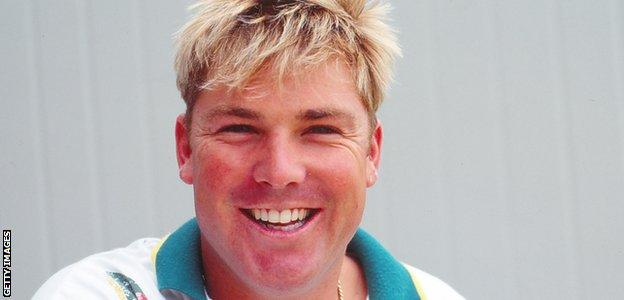Comfortably history’s best leg-spinner, arguably history’s best bowler and surpassed only by Sir Donald Bradman as Australia’s greatest cricketer, Shane Keith Warne has died of a suspected heart attack at the age of 52.
Warne was an unlikely candidate for a sporting hero or national icon when he began his professional life as a shy and chubby boy from Melbourne’s outer suburbs.
That unassuming character, though, started a revolution, turning a dour Australian cricket scene into box-office entertainment in the ’90s and early ’00s, and single-handedly reviving the sport’s most difficult art of leg-spin bowling.
Scandal followed him as closely as adulation, as Warne took money from illegal bookmakers, was banned for using prohibited drugs and sailed through gossip-column indiscretions and social media clangers.
With a confidence that quickly flourished, Warne retained vast public fondness and was a prominent cricket commentator in Australia and the UK until his death.
Black Rock beginnings
Warne’s Melbourne upbringing remained part of his identity, never tiring of potshots at Sydney or cheering on his St Kilda Australian Rules football team.
He briefly played in St Kilda’s reserves but was at the Australian Academy of Sport for his cricket by the age of 19, played at first-class level by 21 and made his Test debut at 22.
At the time cricket captains thought leg-spin was too risky, with the extra spin to attack the bat meaning more mistakes and more runs.
Warne’s first four innings in Tests returned one wicket for 335, and the end was near. Then he knocked over three Sri Lankans in 31 balls to win a thriller in Colombo and suddenly he was away.
A match-winning 7-2 beat the mighty West Indies, he hoovered up wickets in New Zealand, then the legend truly began with his first Test delivery in England: the ‘ball of the century’ that drifted all the way across Mike Gatting, pitched harmlessly outside his legs, but somehow ripped back to clip the top of off stump.
Dazzlement to difficulty

Warne’s major weapon was his accuracy. Instead of bowling one or two bad balls per over, he might bowl one or two per hour. He could do this while shredding the ball or creating no turn at all.
Mountains of his wickets fell to straight balls bowled to players who were worried about the Gatting one.
But the showmanship was always there, and that was what defined him. It was the sense of watching someone who was a magician, a card sharp, an entertainer in equal measure. Warne floated the ball, hung it in the air, made it spin like a celestial sphere.
He knew his power, too. He chattered endlessly, asking batsmen to consider what might come next. He paused often, making them wait before delivering the coup de grace.
He fired in flippers – deliveries which scuttled straight on – that sawed players in half. He made them panic. He had them talk themselves out of an innings.
His bowling approach was a reservoir of latent power, used during the drive of his delivery stride. Each stroll to the crease promised the world, and often delivered.
By 1999 his CV included more than 300 Test wickets, a hat-trick, a one-day World Cup win – and shoulder surgery after all of that work.
Despite his cricketing shrewdness, he was ruled out of captaincy discussions by administrators in 2000 following too many embarrassing headlines about personal behaviour.
Finger injuries followed, and more shoulder surgery. While trying to recover in time for the 2003 World Cup, Warne tested positive for a banned diuretic and was suspended for a year.
With typical Warne blitheness, however, he shrugged off all of this to enjoy a final few glorious years, setting the world record for Test wickets before finishing in 2007 with 708, a mark that only his great spin-bowling rival Muttiah Muralitharan has since gone past.
The life to come

Warne continued to throw himself into whatever came next, captaining and coaching the Rajasthan Royals to victory in the inaugural IPL in 2008, and joining the Melbourne Stars for the first season of the Big Bash League.
With a dearth of quality spinners for Australia, rumours continued for years about him making a national comeback.
Instead he moved into more adventures and trouble: becoming a celebrity poker player and golfer, hosting a short-lived variety show, running a charity foundation that was shut down after probity investigations, continuing to fuel gossip magazines, and establishing himself at the centre of commentary teams for Sky Cricket, Supersport, the Nine Network and Fox Sports.

Through it all, public affection for Warne in some quarters dimmed, but broadly it remained.
In part that acceptance may have been because of his shortcomings, not in spite of them. People saw in him a person not pretending to be anyone else.
They saw his good cheer that persisted despite the stumbles. But beyond all that, they looked back to see the magician who had once cast a spell over their cricketing lives, the man who took the hardest art in the game to make it into his, and his alone.































